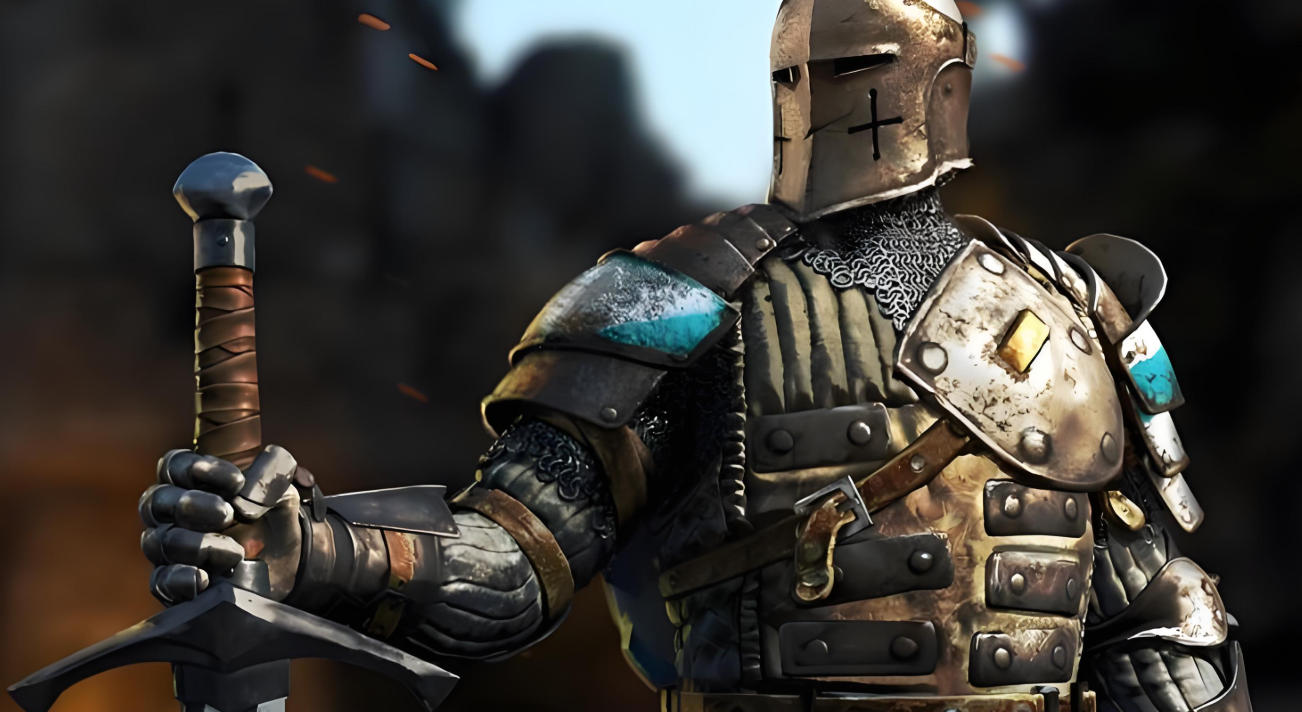European Swords' Legacy & Edge: จากตำนานอัศวินสู่คู่มือนักสะสม

ดาบยุโรปตีขึ้นมือเพื่อการสะสมและจัดแสดง — Glamdring พร้อมด้ามจับไม้โรสวูด เหล็กพับ 1095
ดาบแบบดั้งเดิมของยุโรปคืออะไร?
ดาบยุโรป แบบดั้งเดิม (https://en.wikipedia.org/) ถูกใช้อย่างแพร่หลายโดยอัศวินและทหารตั้งแต่ยุคกลางจนถึงยุคฟื้นฟูศิลปวิทยา โดยทั่วไปดาบจะประกอบด้วยใบมีดเหล็ก โล่ป้องกัน และด้ามจับ ดาบเหล่านี้ไม่เพียงแต่เป็นอาวุธในการต่อสู้เท่านั้น แต่ยังเป็นสัญลักษณ์ของสถานะและยศฐาบรรดาศักดิ์ทางสังคมอีกด้วย ดาบยุโรปสามารถจำแนกประเภทได้ขึ้นอยู่กับวัตถุประสงค์และยุคสมัย เป็นดาบยาว ดาบสำหรับติดอาวุธ ดาบสำหรับดวล และอื่นๆ
ดาบยุโรปแบบดั้งเดิมมีชื่อเสียงในด้าน ความคมกริบ สมดุลอันยอดเยี่ยม และโครงสร้างที่แข็งแกร่ง ทำให้เหมาะสำหรับการฟัน แทง และปัดป้อง อัศวินฝึกฝนการใช้ดาบอย่างเป็นระบบผ่าน การฝึกฝนดาบ และ ศิลปะการใช้ดาบ นอกจากนี้ ดาบยุโรปยังมักปรากฏในวรรณกรรม ตำนาน และภาพยนตร์ เช่น ดาบของอารากอร์น ซึ่งเป็นสัญลักษณ์ของวีรกรรมและความสำคัญทางวัฒนธรรม
1. ต้นกำเนิดทางประวัติศาสตร์และการพัฒนาของดาบยุโรป
ดาบยุโรปมีต้นกำเนิดในยุคสำริดและวิวัฒนาการผ่านยุคเหล็ก ยุคอัศวิน และยุคฟื้นฟูศิลปวิทยา ในแต่ละยุคสมัย ดาบยุโรปมีวัสดุ รูปร่างของใบดาบ และวัตถุประสงค์การใช้งานที่แตกต่างกัน ตัวอย่างเช่น ดาบดวล ในยุคกลางเน้นความสมดุลและความสามารถในการแทง ในขณะที่ดาบยาวที่อัศวินใช้ผสมผสานการฟันและการป้องกัน การศึกษา ศิลปะการใช้ดาบ และ การฝึกฝนการใช้ดาบ จะช่วยให้เข้าใจบทบาทสำคัญของดาบยุโรปในสงครามประวัติศาสตร์และวัฒนธรรมของชนชั้นสูงได้ดียิ่งขึ้น
2. งานฝีมือการตีดาบของยุโรป
ดาบยุโรปแท้ ๆ ถูกสร้างขึ้นด้วยเทคนิค การตีดาบ อันประณีต ดาบแต่ละเล่มผ่านกระบวนการอันซับซ้อน ตั้งแต่การคัดเลือกวัสดุ การตี การพับ การชุบแข็ง และการขัดเงาอย่างประณีต ในระหว่าง การฝึกฝนการตีดาบ ช่างตีดาบจะใช้เวลาหลายปีฝึกฝนทักษะสำคัญใน การทำดาบ การทำดาบ และ การตีดาบ ขั้นตอนเหล่านี้ไม่เพียงแต่กำหนดความคมและความทนทานของใบมีดเท่านั้น แต่ยังรวมถึงความสมดุลและการควบคุม ซึ่งเป็นองค์ประกอบพื้นฐานสำหรับ ศิลปะการตีดาบ และ การฝึกฝนการใช้ดาบ อีกด้วย
ดาบยุโรปคุณภาพสูงมักเลือกใช้มี ดคมกริบที่ประณีตบรรจง เพื่อให้แน่ใจว่าใบมีดคมกริบและทนทาน เหมาะสำหรับการต่อสู้และการดวล เมื่อขัดเงาแล้ว ใบมีดจะยังคงความคมกริบไว้ได้ พร้อมทั้งยังคงความแวววาวและพื้นผิวโลหะที่เป็นเอกลักษณ์ ทำให้ใช้งานได้จริงและสวยงาม นักสะสมและผู้ที่ชื่นชอบประวัติศาสตร์หลายคนเลือกซื้อ ดาบยุโรปแท้ จาก คอลเลกชันคมกริบ หรือซื้อจาก ร้านขายของมีคม เฉพาะทาง และบางคนยังมองหาดาบจำลองที่เป็นสัญลักษณ์ เช่น ดาบของอารากอร์น เพื่อสัมผัสเสน่ห์แห่งประวัติศาสตร์และตำนาน
เทคนิคการตีดาบสมัยใหม่ยังคงรักษางานฝีมือแบบดั้งเดิมไว้ พร้อมกับผสานเทคโนโลยีการชุบโลหะขั้นสูง ด้วยการอบชุบและดับไฟอย่างแม่นยำ ใบดาบจึงสามารถทนต่อแรงกระแทกแรงสูงในการต่อสู้ได้ พร้อมคงความคมที่ยาวนาน โครงสร้างของด้ามจับ การ์ด และฝักดาบก็พิถีพิถันไม่แพ้กัน ออกแบบมาเพื่อความสะดวกสบายตามหลักสรีรศาสตร์และความมั่นคงในการใช้งาน สำหรับ ดาบคู่ และดาบสะสม ระดับฝีมือการตีดาบมีผลโดยตรงต่อคุณค่าและความสำคัญของดาบ
โดยสรุปแล้ว ดาบยุโรปทุกเล่มเป็นตัวแทนของการผสมผสานที่ลงตัวระหว่างงานฝีมือและศิลปะ ไม่ว่าจะใช้เพื่อ ฝึกฝนศิลปะดาบ ฝึกฝนการดวล หรือเป็นส่วนหนึ่งของ คอลเลกชันอันล้ำค่า เทคนิคการตีดาบอันยอดเยี่ยมและความใส่ใจในรายละเอียดช่วยยกระดับดาบเหล่านี้ให้เหนือกว่าแค่อาวุธธรรมดา กลายเป็นการผสมผสานที่ลงตัวระหว่างประวัติศาสตร์ วัฒนธรรม และสุนทรียศาสตร์
3. การฝึกดาบและการประยุกต์ใช้จริง
ดาบยุโรปไม่เพียงแต่เป็นของสะสมเท่านั้น แต่ยังเป็นอาวุธที่ใช้งานได้จริงอีกด้วย อัศวินในยุคกลางฝึกฝนทักษะผ่านการฝึกฝน ดาบคู่ ศิลปะดาบ และ การใช้ดาบอย่างเชี่ยวชาญ ฝึกฝน การโจมตี การป้องกัน และการทรงตัวอย่างแม่นยำ ในการต่อสู้จริง ความสมดุล น้ำหนัก และความคมของดาบส่งผลโดยตรงต่อประสิทธิภาพของดาบ ดังนั้นการฝึกซ้อมทุกครั้งจึงเน้นย้ำถึงความแข็งแกร่ง ความเร็ว และความอดทน อัศวินไม่เพียงแต่ฝึกฝนการใช้ดาบเดี่ยวเท่านั้น แต่ยังฝึกฝนการใช้ดาบคู่ เพื่อเพิ่มพูนความสามารถใน การใช้ดาบคู่ เพื่อรับมือกับคู่ต่อสู้และสถานการณ์การต่อสู้ที่หลากหลาย
ผู้ที่ชื่นชอบดาบยุโรปยุคใหม่ให้ความสำคัญกับการฝึกฝนดาบอย่างเป็นระบบและปลอดภัย ผ่านหลักสูตรต่างๆ เช่น เคนจุตสึ/เคนจุตสึ และ การฝึกดาบคาตานะ ผู้ฝึกฝนจะได้สัมผัสกับเทคนิคการดาบจากหลากหลายวัฒนธรรม เคนจุตสึ เน้นการหายใจ จังหวะ และการควบคุมจิตใจ ผสมผสานหลักการดาบญี่ปุ่นเข้ากับการฝึกฝนดาบยุโรป ช่วยให้ผู้เรียนสามารถสร้างสมดุลระหว่างการรุกและการป้องกันได้อย่างแม่นยำ การฝึก ดาบคู่ เน้นการเคลื่อนไหวที่นุ่มนวล เทคนิคที่ประณีต และการควบคุมพลัง เหมาะสำหรับการแสดงบนเวที การแสดงจำลองเหตุการณ์ทางประวัติศาสตร์ และประสบการณ์ที่สมจริงที่จำลองการต่อสู้ของอัศวินยุคกลาง
อุปกรณ์มีความสำคัญเท่าเทียมกันในการฝึกดาบ มีดคม คุณภาพสูงหรือดาบจำลองอย่าง ดาบอารากอร์น ช่วยยกระดับประสบการณ์การสัมผัสและการเรียนรู้สำหรับผู้ฝึกฝน น้ำหนัก สมดุล และการจับถือของดาบเหล่านี้ช่วยให้ผู้เรียนรู้สึกใกล้ชิดกับการต่อสู้ของอัศวินในประวัติศาสตร์ การมีส่วนร่วมในกระบวนการ ผลิตดาบ หรือ การตีดาบ ยังช่วยให้ผู้เรียนเข้าใจถึงฝีมือและความสำคัญทางวัฒนธรรมเบื้องหลังวิชาดาบ ซึ่งยิ่งทำให้พวกเขาซาบซึ้งในดาบยุโรปมากยิ่งขึ้น
การฝึกดาบสมัยใหม่ให้ความสำคัญกับความปลอดภัยและคุณค่าทางการศึกษามากขึ้น การใช้ดาบฝึก อุปกรณ์ป้องกัน และการดวลจำลอง ช่วยให้นักเรียนสามารถสัมผัสแก่นแท้ของวิชาดาบได้อย่างปลอดภัย ชมรมและสำนักดาบหลายแห่งผสมผสาน ศิลปะดาบ เข้ากับการศึกษาทางประวัติศาสตร์และวัฒนธรรม ช่วยให้ผู้เข้าร่วมไม่เพียงแต่ได้เรียนรู้ทักษะเท่านั้น แต่ยังเข้าใจถึงความสำคัญทางประวัติศาสตร์ จิตวิญญาณแห่งอัศวิน และมรดกทางวัฒนธรรมของดาบยุโรปอีกด้วย
โดยรวมแล้ว การฝึกดาบแบบยุโรปไม่เพียงแต่เป็นการทดสอบความแข็งแกร่งและทักษะเท่านั้น แต่ยังเป็นการถ่ายทอดประวัติศาสตร์ วัฒนธรรม และจิตวิญญาณอีกด้วย ไม่ว่าจะเป็นการแสดงบนเวที การแสดงจำลองเหตุการณ์ทางประวัติศาสตร์ หรือการพัฒนาทักษะส่วนบุคคล ผ่าน การดวลดาบ การฝึกดาบ และการฝึก เคนจุต สึข้ามวัฒนธรรม ผู้เข้าร่วมทุกคนจะได้สัมผัสเสน่ห์อันเป็นเอกลักษณ์และคุณค่าเชิงปฏิบัติของดาบยุโรปอย่างลึกซึ้ง
4. สัญลักษณ์ทางวัฒนธรรมของดาบยุโรป
ดาบยุโรปไม่ได้เป็นเพียงอาวุธ แต่ยังสื่อถึงจิตวิญญาณแห่งอัศวิน เกียรติยศ และตำนานวีรบุรุษอีกด้วย ในวรรณกรรม ภาพยนตร์ และประวัติศาสตร์ ดาบมักเป็นสัญลักษณ์ของความกล้าหาญ อำนาจ และความยุติธรรม ยกตัวอย่างเช่น ดาบของอารากอร์น ใน เดอะลอร์ดออฟเดอะริงส์ ดาบนี้ไม่เพียงแต่เป็นเครื่องมือในการต่อสู้เท่านั้น แต่ยังเป็นสัญลักษณ์ของความเป็นกษัตริย์ ความรับผิดชอบ และวีรกรรมอีกด้วย นักสะสมและแฟน ๆ จำนวนมากต่างรำลึกถึงตำนานนี้ด้วยการซื้อ ดาบอารากอร์ น ดาบอารากอร์น หรือ ดาบนาร์ซิลของอารากอร์น เพื่อรำลึกถึงทั้งฝีมืออันประณีตและเทคนิคการตีอันพิถีพิถัน
ในสังคมยุโรปยุคกลาง ดาบยังเป็นสัญลักษณ์ของสถานะและอำนาจ การมี มีดคมกริบ หรือ ดาบคู่ แสดงถึงความกล้าหาญ เกียรติยศ และความสามารถในการต่อสู้ของอัศวิน ดาบไม่เพียงแต่ใช้ในสนามรบเท่านั้น แต่ยังเป็นมรดกตกทอดและเครื่องหมายแห่งเกียรติยศของตระกูลอีกด้วย ตระกูลอัศวินหลายตระกูลได้สืบทอดดาบต่อกันมาหลายชั่วอายุคน โดยมีการตกแต่ง แกะสลัก และจารึกที่สะท้อนถึงวัฒนธรรมและสถานะทางประวัติศาสตร์ของตระกูล
นักสะสมสมัยใหม่ยังให้ความสำคัญกับความหมายทางวัฒนธรรมของดาบยุโรปอีกด้วย ดาบกลามดริง ดาบ จำลองกลามดริง และดาบจำลองอื่นๆ ที่ใช้ในวรรณกรรมหรือภาพยนตร์ ล้วนถูกจัดแสดงเป็น ของสะสมที่คมชัด เปิดโอกาสให้ผู้คนได้สัมผัสและสัมผัสวัตถุโบราณทางประวัติศาสตร์และตำนานเหล่านี้ การจัดแสดงดาบเหล่านี้ถือเป็นการอนุรักษ์ฝีมือการประดิษฐ์ดาบแบบยุโรป พร้อมกับสืบทอดสัญลักษณ์ทางวัฒนธรรมของความกล้าหาญ ความภักดี และเกียรติยศของอัศวิน
ยิ่งไปกว่านั้น คุณค่าเชิงสัญลักษณ์ของดาบยังขยายไปถึงการศึกษาและการแสดงอีกด้วย ในการฝึก ศิลปะดาบ หรือ การใช้ดาบ ผู้เรียนไม่เพียงแต่พัฒนาทักษะทางเทคนิคเท่านั้น แต่ยังเข้าใจถึงจริยธรรมทางประวัติศาสตร์และหลักการอัศวินที่อยู่เบื้องหลังดาบอีกด้วย ไม่ว่าจะใช้เป็นของสะสม ของจัดแสดง หรือเพื่อการฝึกฝนและการแสดงจริง ดาบยุโรปก็มีความสำคัญทางวัฒนธรรมอันโดดเด่น ช่วยให้ผู้ชมยุคใหม่ได้สัมผัสกับการผสมผสานที่ลงตัวระหว่างประวัติศาสตร์ ศิลปะ และวีรกรรม









